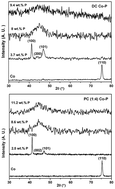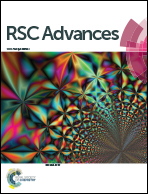Characterization and corrosion behavior of Co and Co–P coatings electrodeposited from chloride bath
Abstract
Co–P coatings with low and high phosphorous contents are electrodeposited using direct current (DC) and pulse current (PC) methods from cobalt chloride baths. The low phosphorous content coatings obtained from DC and PC methods are crystalline with predominantly fcc structure, while the high P content coatings are amorphous. Electrochemical corrosion studies reveal an increase in corrosion resistance with increasing phosphorous content in both DC and PC plated coatings. The PC coatings show a higher polarization resistance (Rp) and a lower corrosion current density (icorr), indicating better corrosion resistance. Compositional analysis shows a slight or no increase in P content after corrosion in PC coatings with a high P content, indicating better corrosion resistance. Comparisons of the surface morphologies before and after corrosion illustrate that the PC plated coatings are less affected than their DC counterparts. X-ray photoelectron spectroscopy (XPS) reveals a larger amount of oxidized cobalt in the PC electrodeposited coatings, whereas mainly metallic Co species are found in the DC plated coatings. This study demonstrates that the overall corrosion resistance for the PC deposited coatings is better than that of the DC deposited coatings because of the high P content, amorphous structure, smooth morphology, and higher metal oxide content in the deposits.


 Please wait while we load your content...
Please wait while we load your content...